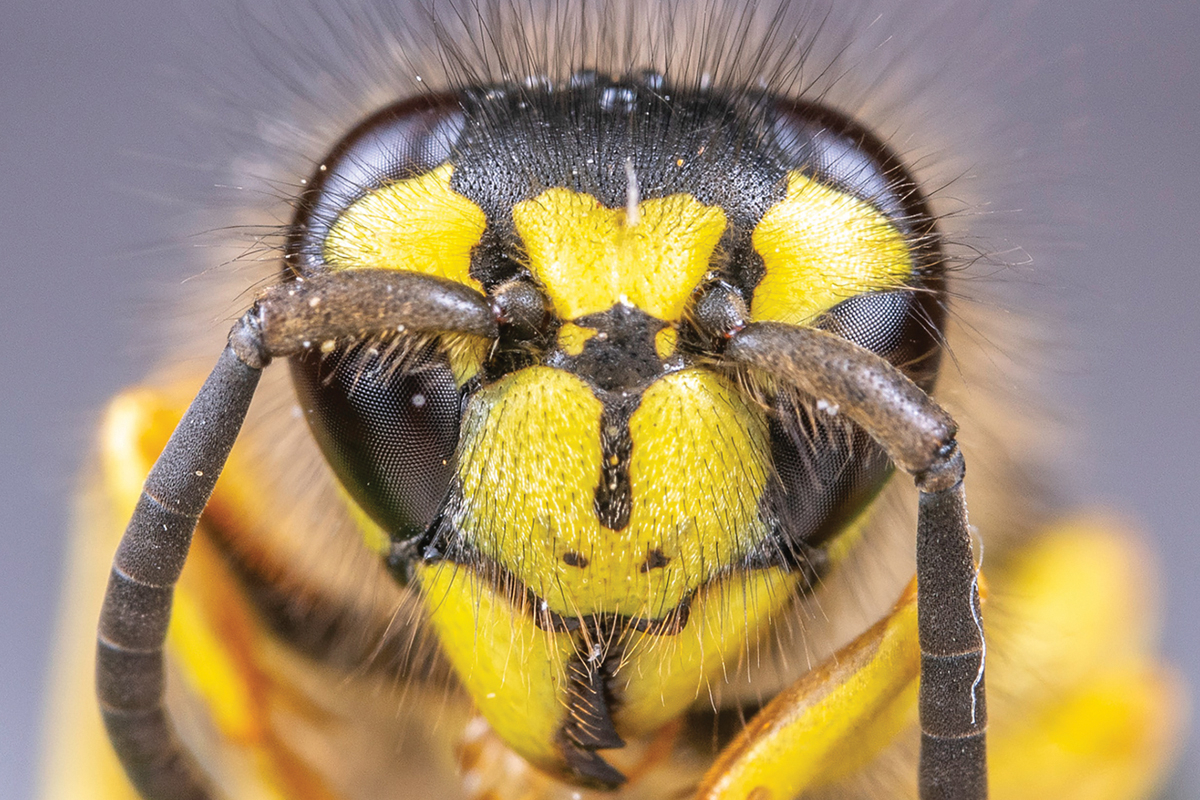Yellow Jacket Muse
 If you put distance between yourself and a yellow jacket nest after the first sting, that’s probably the only one you’ll get. Fred Coyle photo
If you put distance between yourself and a yellow jacket nest after the first sting, that’s probably the only one you’ll get. Fred Coyle photo
Before Becky and I retired up Moses Creek, I made my living as a backpack and canoe guide here in the Blue Ridge and in other parts of the country.
My Slickrock Expeditions clients came mostly from the southeastern cities, and some of them — first-timers especially — arrived feeling nervous about the wilds.
It was the nervousness that lies in our word “wilderness” itself — a yoked-together term from ancient days that means “wild” (untamed) “deor” (animal). “Wil-deor-ness” is where wild beasts roam, unchecked-leashed-fenced by the human hand. It was the nervousness I heard in the audience’s gasp whenever I showed slides at REI, and up came the picture of the snake.
I think of the client who called me months before his trip in Panthertown Valley, here in the Nantahala National Forest. He asked, somewhat sheepishly, “Are yellow jackets going to be a problem?” He’d been stung in the yard, he explained, first time, and though there’d been just redness at the site, he was worried that if stung again — the first one being the cocking of the gun — he’d go into anaphylactic shock. We were at opposite ends of North Carolina, but through the miles of wire between us I could hear fingers of fear tightening around his throat.
I tried to reassure him with the fact that only 5% of people are deathly allergic to bee stings.
“Yellow jackets get me a half-dozen times a year,” I said. “It’s never more than mild.”
Related Items
I told him EpiPens would be in my first-aid kit, just in case, and I’d been trained to use them — though it had never come to that. Trying to inject a little humor into the conversation, I noted that statistically he was more likely to die on the drive to the trailhead than from a sting once he got there. When he mentioned his trip dates, I said, “Relax! That late in the fall, you probably won’t see any yellow jackets. The bears and raccoons will have destroyed every nest to eat the larvae inside.”
“Whoa! Wait a minute! Stop! Forget about yellow jackets!” I heard him shout, fear ringing through the wire. “Tell me about these BEARS!”
Yesterday on my morning hike up the ridge, I felt something sting my hand — a yellow jacket. I slapped it off, then, turning to look, was surprised to see a large ground nest. I’d walked past the spot for days unmolested. But an animal had tried to dig into the nest overnight, and now the creatures were boiling out so hot their yellow was red with rage.
I knew to make tracks. If you put distance between yourself and a nest after the first sting, that’s probably the only one you’ll get. But if you wait until you’re stung a second time, you’ll be so marked with the insect’s alarm pheromone that the whole colony will attack. My inclination to stop and look was my doom.
A second sting brought me to my senses, and I started down the trail. Too late! Another yellow jacket got me, behind the knee this time, then another, on the elbow. Speeding up, I broke a leafy branch and waved it around me to keep other stingers off. A quarter of a mile away, I slowed down — that’s when I got a fifth sting. So I waved the branch again and trotted home, putting the nest half a mile behind me.
I was taking my boots off at the door when yellow jacket number six latched onto my ankle and plunged its stinger in to the hilt.
Later in the day, to take my mind off the itchy welts, I looked back through my business records to see how many wilderness trips I’d guided. The total came to more than 450 in 30 years, involving around 4,000 people. Put another way, I’d lived outdoors with clients for over five years, including some 2,000 nights of camping. And if I added to that the many personal treks I’ve made with friends and kin, starting in my teens, the numbers would go up by another third.
But — and here’s the point — during all this time, from Panthertown and the Okefenokee to the Tetons, the Blackfoot and the Rio Grande, there’d been no lunging snakes, no ravenous wolves, no “Night of the Grizzly.” In hundreds of trips, not a single person had been bitten, clawed, butted, mauled, gored, gouged, stuck or struck by anything that swims or runs, slithers, creeps, crawls or flies except mosquitoes — and, yes, yellow jackets!
(Burt and Becky Kornegay live in Jackson County.)









